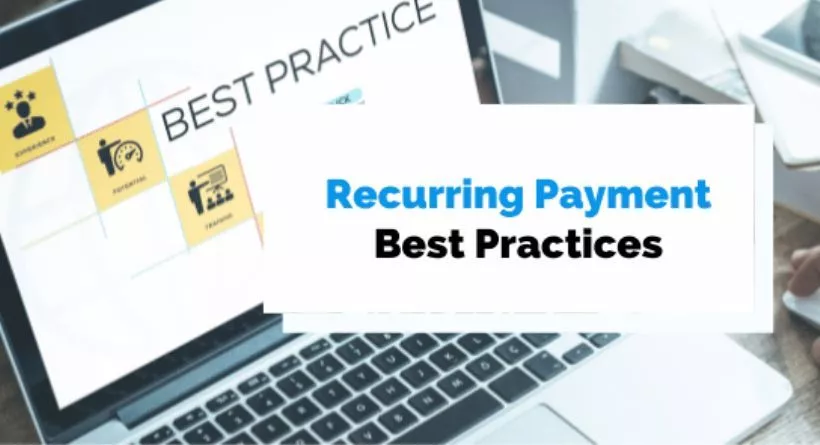It comes as no surprise that a lot of businesses are wondering how to handle recurring payments more effectively given the SaaS migration trend that is sweeping the globe. Many accounting teams are finding it difficult to keep up with the rising popularity of subscription billing models because they haven’t implemented the best practices and technologies necessary to manage the enormous amount of invoices that these billing cycles create.
In order to effectively handle recurrent payments, one must have a thorough grasp of revenue recognition and deferral schedules, as well as a solid foundation in compliance requirements. There is a lot to learn. Developing a new payment plan might be complicated, but it’s necessary to do so in order to meet changing client expectations.
Few businesses can afford to put off using the appropriate tools and best practices because of the expansion of SaaS migration and billing choices across sectors. You may discover nine recommended practices for managing recurring payments below.
The 9 best practices to help you manage recurring payments
- Recognize the subtleties of revenue recognition for contemporary billing
- Invest in security to safeguard private consumer information and payment details.
- Create open payment systems that inspire client confidence.
- At each point of the billing cycle, make an investment in concise communication.
- A strong dunning plan may stop income leakage.
- Real-time reporting allows you to keep track of subscriber churn numbers.
- Allow clients to select their preferred day and frequency of billing
- Keep track of earned vs. deferred revenue to adhere to GAAP accounting standards
- Utilize subscription management software to manage recurring payments.
1. Recognize the subtleties of revenue recognition for contemporary billing
Different income streams can be introduced with changing frequency using modern billing models. Some clients would pay for an entire year up advance, so you would have to wait to recognize that revenue until you really earned it. Others, however, could pay for their membership over time in order for you to earn and realize income concurrently.
Success requires flexibility. There’s a good chance that the more alternatives you provide, the more users you can sign up. It’s important to keep in mind nevertheless that offering a variety of solutions could put a pressure on the accounting division. To maximize their efforts and cut down on manual labor, inform the entire team about revenue recognition for subscription billing.
2. Invest in security to safeguard private consumer information and payment details.
Due to the increase in cyberattacks, businesses cannot undervalue the need of safeguarding client data, especially that pertaining to payments and billing. Nobody is safe, thus it would be negligent not to spend money on security measures that allow you to gather and keep billing data for recurring payments while protecting the integrity of your data.
Be careful to take into account the reputation of your partners because many informed clients will examine the reviews of the payment gateways and systems you employ. Customers are more likely to trust your system with their payment information if you collaborate with well-known businesses that they are familiar with. Users will prioritize this metric differently, but many would never sign up if it doesn’t seem safe throughout the initial phases of the payment cycle.
3. Create open payment systems that inspire client confidence.
Have you ever committed to a membership service just to have some questions come up later? You could be unsure of the service and want to confirm the cancellation policies, or you might have questions about how refunds operate, or you might need to change your credit card information. Most likely, all of this was covered by the payment terms you checked when you signed up, but you didn’t have time to read them carefully.
Transparency in payment terms and procedures on your website is recommended practice. Today’s environment makes it impossible for us to always have enough customer service representatives on hand to address all of our customers’ inquiries. By making the majority of the information clients need public, building out knowledge bases, particularly around important information like payments, will lessen the effort on your team. Due to the fact that customers won’t have to endure lengthy wait times or interact with a subpar chatbot, measures like these assist to increase client confidence.
4. At each point of the billing cycle, make an investment in concise communication.
When trying to properly communicate with our consumers about little adjustments, there is frequently a gap. It may occasionally be simple to overlook the human element of things since SaaS migration best practices have so much automation at their core.
As you refine your SaaS pricing plans and react to external influences like inflation, there will be significant changes. You must make an investment to inform your user base of any billing or payment process changes in a clear and concise manner. No matter how “inconsequential” you may believe the changes are, let them know if there have been any revisions to the cancellation policy, security measures, invoicing alternatives, or payment processor.
5. A strong dunning plan may stop income leakage.
Failure to pay is a common occurrence in business. Your bottom line is still affected, whether the problem is with expired cards or a technological issue. It’s crucial to recover as much revenue leakage as possible, especially with subscriptions, to increase monthly recurring revenue (MRR). Your team can better guard against revenue losses with an efficient dunning plan.
Effective dunning management is needed in modern billing to increase revenue and reduce customer attrition. Pre-dunning communications tactics to inform clients that forthcoming payments could fail owing to expiry cards should be a part of sound initiatives. For a detailed explanation of how dunning management strengthens your subscriber base against churn and avoids revenue leakage, see our guide on mastering dunning management.
6. Real-time reporting allows you to keep track of subscriber churn numbers.
Successfully collecting recurring payments depends on effective reporting. Companies should invest in software that automatically provides reports that represent important churn indicators because it is simple to lose track of subscriber attrition with large user populations.
These figures are crucial for comprehending growth and financial health and may be useful tools for attracting and keeping customers. Manual reporting of these indicators is doable but time-consuming; expanding businesses could find it impractical to do so. After your free trial, are you noticing a significant rise in customer churn? Find out why by being curious. The attrition rate probably indicates a problem that your team can resolve.
7. Allow clients to select their preferred day and frequency of billing
Increasing the flexibility surrounding billing frequency is one of the most critical changes that most businesses need to make to their recurring payments. Users are frequently subject to a variety of cash flow limitations. Smaller businesses or individuals, for instance, could find it difficult to pay an annual fee up front and instead choose to spread the cost out over the course of the year. Larger organizations may opt to pay upfront and use a predetermined quarterly or annual budget.
The key is that your clients expect to pick in addition to like you. Offering various payment terms and schedules enables consumers to choose the day on which their payments will be made. Both lowering rejected payments and raising customer satisfaction are important goals.Additionally, it’s one of the finest methods to guarantee that clients will have adequate money on hand when the payment comes.
8. Keep track of earned vs. deferred revenue to adhere to GAAP accounting standards
One of the key issues for most accountants is adherence to GAAP. ASC 606 and IFRS 15’s implementation, which deal with the recognition of recurring revenue, may deter some businesses from making the switch. Keeping track of earned and deferred income is essential for success, and there are several recommendations available to make the transition easier for your staff. Compliance need not be challenging if transparent, auditable reporting is in place. For an overview of what to expect from recurring payments, see this ASC 606 guidance.
9. Utilize subscription management software to manage recurring payments.
Without deploying subscription management software, it is nearly hard to keep up with contemporary billing. If they use outdated accounting procedures and systems, even the most adaptable teams will have trouble finishing the month. Customers should be able to upgrade to a higher tier of services, alter billing information, or suspend payments with ease using your program. To update accounts automatically without creating unneeded confusion, all this functionality must link with the backend.
Seek out remedies that address the subtleties of regular recurring billing. Make sure you spend money on software that permits dunning, simplified reporting, payment frequency flexibility, and automation of labor-intensive procedures that hold up your team’s progress. See here for a list of the key characteristics to look for in subscription management software.


